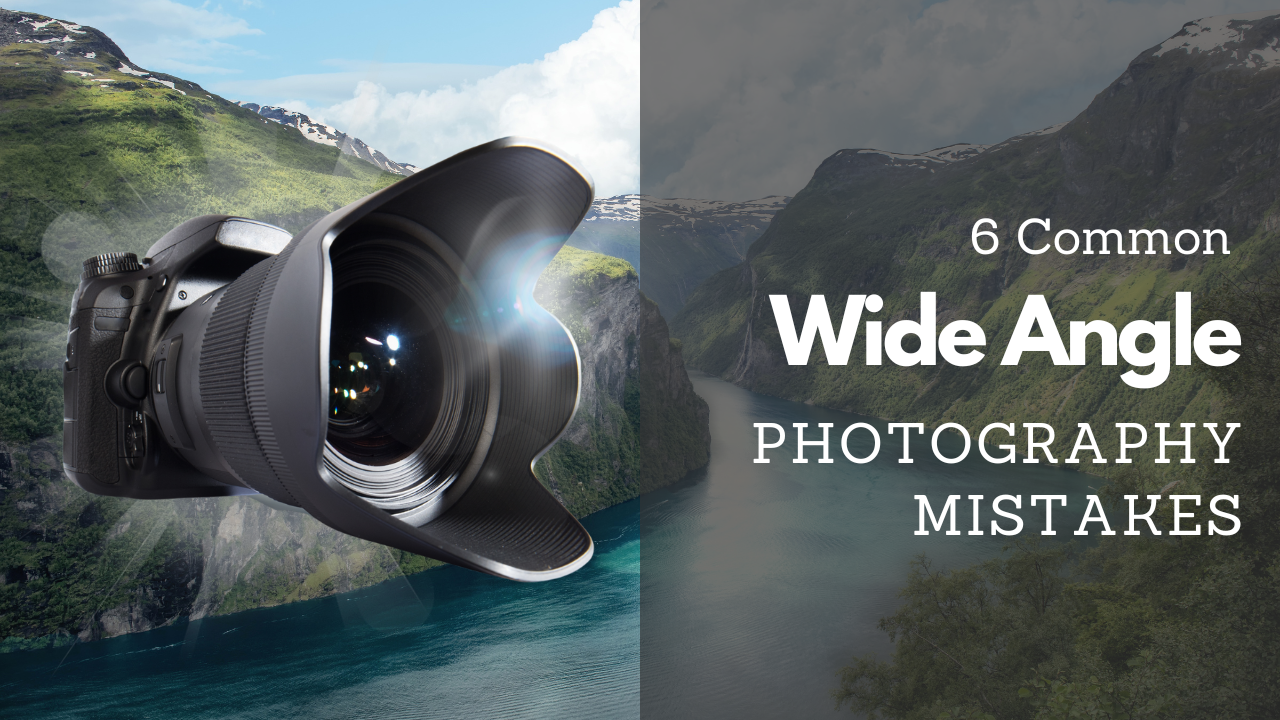Common Wide Angle Photography Mistakes

Using a wide-angle lens can be one of the most challenging lenses for photographers to master. Ultra-wide angle lenses, in particular, are notoriously difficult to use correctly. They bring unique effects and perspectives that other lenses do not offer but also require an understanding of how their specific characteristics will affect the final image.
In this article, we’ll discuss some common photography mistakes made when using a wide-angle lens so you can avoid them and create stunning images with your next shoot!
No real subject, or subject too small.
Ultra-wide angle lenses can create a vast field of view, and if there is no real subject or the subject is too small in the frame, it can cause the eye to wander.
There is a temptation to try and fit too much in the frame, and the result is a photo that doesn’t have any focus or impact.
Make sure you have an interesting main subject that occupies at least one-third of the frame to keep your viewers engaged.
No strong foreground
Ultra-wide angle lenses are excellent for creating depth in a photo, but if there is no strong foreground element, the image can look flat and uninteresting. When shooting with an ultra-wide angle lens, make sure to have something interesting in the foreground that adds context and interest to your shot. Foregrounds with texture or contrast can help your photo stand out and draw the viewer in.
Not getting close enough
In order to create a dramatic effect, it is important to get close enough to your subject or foreground when using an ultra-wide angle lens. Otherwise, the perspective will be too wide and the subject can become lost in the frame. Just be careful as when you get closer you will likely introduce unwanted distortion.
Lens flare
Lens flare is a common issue when using ultra-wide angle lenses. Make sure to check the lens for any dirt, dust or smudges before shooting and use a lens hood to reduce the risk of flare.
You might have to shade the lens with something like your hand, a hat or a piece of cardboard to really reduce any flare.
Whilst lens flare can be an artistic choice, make sure it’s intentional and not a mistake. Lens flare can be quite difficult to remove in post-production, so it is always better to try and avoid it in the first place.
Distortion
Ultra-wide angle lenses can cause distortion, especially at the edges of the frame. This can be used to creative effect but it is important to remember that some objects will appear stretched out or curved unnaturally. That’s why it is important to keep your main subject in the middle of the frame and use a tripod if possible.
You can usually correct this distortion in post-production, but it is best to try and avoid it in the first place by being careful with your composition.
Not having everything in focus
Ultra-wide angle lenses have a much greater depth of field than other lenses, but that doesn’t mean everything will be in focus. Make sure to adjust your aperture and focus accordingly to ensure you get the desired result.
Focus stacking can also be used to ensure everything is in focus, but this can be a time-consuming process so it’s best to get your settings right before you start shooting.
By understanding these common mistakes, you can avoid them when shooting with an Ultra Wide Angle lens and create beautiful images!
Download your free copy of my Landscape Photography Camera Setup Checklist
Even the most experienced photographers can ruin a photo with one small mistake. You spend all that time setting up your tripod and camera, but forget to check one thing and the photo is ruined.


